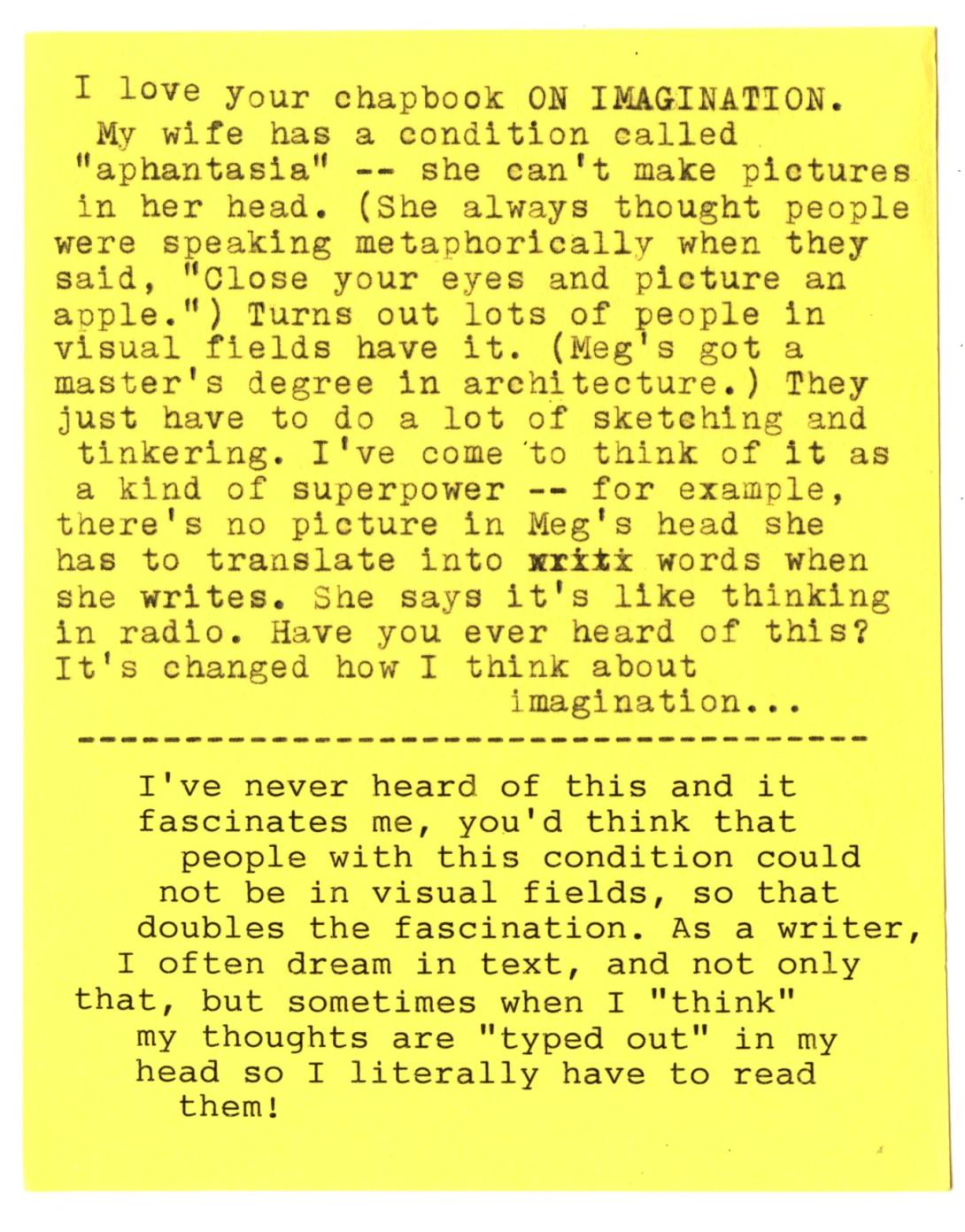Artist Keith A. Pettit, interviewed in Handprinted:
About 20 years ago, I shifted my focus from sign making and graphic design, to an art-led living. I range from tiny wood engravings, lino reductions, and sculptures; usually using wood to create — from the reasonably small to the stupidly enormous. Sometimes they’re also on fire.
I like the phrase “art-led living.” We’d all do well to live like that.
Last month I took at Nonviolent Crisis Intervention course at Holland College. It was training I’d wanted for more than a decade; this was the first chance I’d had to take it locally, and it proved invaluable. I grieve the years I was without it, and handled crises ham-fistedly.
One of the slides in the course slide deck concerned the Johari Window, which looks like this:
The idea is that you choose a number of adjectives from a list to describe yourself, then have your peers choose adjectives to describe you, from the same list. These adjectives are then placed in the quadrants based on whether each appears on both lists (“Arena”) or one or the other (“Façade” or “Blind spot”).
We didn’t dwell on the concept, but once I got home I looked it up. Who was “Johari,” I wondered?
Johari, it turns out, were Joseph Luft and Harrington Ingham, American psychologists.
As things often happen with me, I hopped into the Johari rabbit hole, and discovered that Luft died in 2014, two days after he turned 98 years old, after being hit by a car:
In a statement Saturday, his family said, “We are mourning the loss of our father and family member, but we are also celebrating his long and healthy life. Joe was the child of immigrants, a World War II veteran, renowned psychologist, proud father of four and beloved local figure. He cherished his daily walks and took them religiously for over 50 years.
“While his death was sudden, he died doing what he loved. We do not yet know the details of what happened, but our hearts go out to the driver of the car and his family during this difficult time.”
Nine months later, the city of Berkeley installed a flashing beacon at the intersection where Luft was killed.
I have thought of Luft often in the month since I came to know of him.
I love Austin Kleon’s Typewriter Interviews (something I wish I’d invented). I especially like his interview with poet Mary Ruefle, which includes:

I don’t know where I lie on the aphantasia to hyperphantasia spectrum, but I know for a fact that I’m far to the “a” of my “hyper” partner.
(One of the favourite things I’ve ever done is setting up a “One Minute Novel” stand on the plaza at Trent University during the annual Bacchus music festival, sometime in the late 1980s (maybe it was 1989?). I had a table and chair, and a typewriter, and I wrote (very short) novels in a minute, for a nominal fee. It was such, such fun.)
From The Rage My Father Gave Me, by Molly Rosen, in New York:
First, he started screaming at no one in particular: “What the fuck?!” Then at the receptionist, a scrawny college girl with fried blonde hair: “My daughter has been waiting for two hours, two fucking hours!”
His booming voice filled the very small office. The receptionist burst into tears. The orthodontist rushed out, ripping off his rubber gloves. “What’s going on here?”
It’s a powerful piece.
See also Martha, currently streaming on Netflix, a documentary about Martha Stewart, who seems to have been similarly shaped by her father’s rage.
Adam Mastroianni’s post So you wanna de-bog yourself is a tour de force of life-unstucking reflection. Like:
Waiting for jackpot
Sometimes when I’m stuck, someone will be like, “Why don’t you do [reasonable option]?” and I’ll go, “Hold on there, buddy! Don’t you see this option has downsides? Find me one with only upsides, and then we’ll talk!”
I’m waiting for jackpot, refusing to do anything until an option arises that dominates all other options on all dimensions. Strangely, this never seems to happen.
Often, I’m waiting for the biggest jackpot of all: the spontaneous remission of all my problems without any effort required on my part. Someone suggests a way out of my predicament and I go, “Hmm, I dunno, do you have any solutions that involve me doing everything 100% exactly like I’m doing it right now, and getting better outcomes?”
Patrick Rhone posted a lovely recollection on the occasion of his 20th anniversary. In part:
But, truth be told, I ended up spending most of the time outside of the play talking to Bethany. She’s just the sort of interesting person with fascinating stories that you never really tire of talking to. Incredibly well read and travelled. The smartest one in the room without being annoying about it. Just when you think you’ve encountered a subject she knows nothing about, she still finds something smart and interesting to say about it.
In the spring of 2020, when I emerged solely responsible for maintenance of the estate, I asked Gary Schneider, from The Macphail Woods Ecological Forestry Project, to come and help me get the lay of the land (among many other interesting activities, Macphail Woods offers landscaping consulting).
One of the things Gary recommended was pruning the apple, cherry, and plum trees that make up a small orchard in the back yard.
I immediately proceeded to not do that.
This summer, Lisa’s uncle Brian, an architect and polymath, made a visit to the back yard to survey our sagging carriage house.
After we’d discussed its possible futures, Brian recommended we prune the apple, cherry, and plum trees that make up a small orchard in the back yard.
I immediately proceeded to not do that.
But…
Today I did.

(Photo edited to remove a shadow in the lower left, using Apple’s Photos app’s “Clean Up” feature).
The provincial government has launched a campaign, You Matter, to raise the profile of thinking about mental health in the public service workplace.
The video released to launch the campaign features a variety of public servants, followed by Premier Dennis King, and I especially appreciated his words:
I think the first thing I would tell anyone is what I tell myself: it’s okay. You aren’t broken. There’s nothing wrong with you that can’t be helped, if you recognize what’s going on, and you talk to people, and you try your best to address it.
I particularly appreciate the Premier speaking in the first person, rooting his words in his own experience. Far too often we think of mental health is being something that only other people need to be concerned with.
Next week is Transgender Awareness Week:
Transgender Awareness Week is a week when transgender people and their allies take action to bring attention to the trans community by educating the public about who transgender people are, sharing stories and experiences, and advancing advocacy around issues of prejudice, discrimination, and violence that affect the transgender community.
With anti-trans discrimination and violence such virulent aspect of the US election, this year’s marking is more important than ever.
Not Losing You is a “national PSA/micro-movie supporting trans and LGBTQ youth amid relentless anti-trans and anti-LGBTQ legislation” from filmmaker James Lantz:
Parents can play such an important role in supporting their trans kids. As the father of a trans woman, I’m viscerally aware of the prejudices, fears, and assumptions I carry inside myself, and the importance of confronting them.
I saw myself in the movie.
The single most helpful support for me as a parent supporting Olivia has been Transforming Family, a California-based support organization. Every month I facilitate a Zoom call for the parents and caregivers of autistic trans children; the people I’ve met there, the solidarity we’ve cultivated, the support they’ve offered, has been transformative.
During this important week, I encourage you to support the work of Transforming Family and similar organizations; their work is vital.
Frank reminds us that yesterday was Aaron Swartz Day.
Aaron left a comment on one of my posts here, 20 years ago, which made it feel like we were part of the same little corner of the Internet. While we never met, I felt him a kindred spirit, a much more prolific and accomplished practitioner of the same underlying digital sensibilities.
Here are some of Aaron’s own words, from his 2012 blog post Lean into the pain:
When you first begin to exercise, it’s somewhat painful. Not wildly painful, like touching a hot stove, but enough that if your only goal was to avoid pain, you certainly would stop doing it. But if you keep exercising… well, it just keeps getting more painful. When you’re done, if you’ve really pushed yourself, you often feel exhausted and sore. And the next morning it’s even worse.
If that was all that happened, you’d probably never do it. It’s not that much fun being sore. Yet we do it anyway — because we know that, in the long run, the pain will make us stronger. Next time we’ll be able to run harder and lift more before the pain starts.
And knowing this makes all the difference. Indeed, we come to see the pain as a sort of pleasure — it feels good to really push yourself, to fight through the pain and make yourself stronger. Feel the burn! It’s fun to wake up sore the next morning, because you know that’s just a sign that you’re getting stronger.
Few people realize it, but psychological pain works the same way. Most people treat psychological pain like the hot stove — if starting to think about something scares them or stresses them out, they quickly stop thinking about it and change the subject.
The problem is that the topics that are most painful also tend to be the topics that are most important for us: they’re the projects we most want to do, the relationships we care most about, the decisions that have the biggest consequences for our future, the most dangerous risks that we run. We’re scared of them because we know the stakes are so high. But if we never think about them, then we can never do anything about them.
Aaron was 26 years old when he wrote that, the year before he died. He would have turned 38 yesterday. What a loss for us all it is to have missed what he might have become in those lost years.
 I am
I am